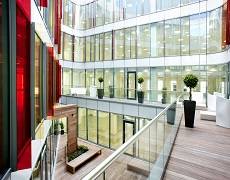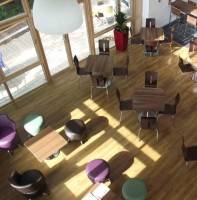August 28, 2013
Dull corporate offices with no “buzz” inhibit productivity, complain staff
Creating a dynamic and creative workplace is dependent on a number of factors; the office layout and design, the style of management and the wider company culture. Get these elements right and, says workplace consultants Morgan Lovell you hit the “Buzz Barometer” – a combination of a good atmosphere, energy and teamwork which encourages productivity and high levels of employee engagement. However, according to their recent research, three quarters (78 per cent) of employees say they would be significantly more productive if their workplace had more buzz. And worryingly for larger organisations, corporates are failing to match small company buzz, with four-fifths (81 per cent) saying SMEs offer a better working atmosphere than large companies.
























August 15, 2013
Progress made on proposed FM bodies’ merger but membership consultation to wait
by Sara Bean • Comment, Facilities management, News
The British Institute of Facilities Management (BIFM) reports that merger talks with fellow FM and services related bodies, Asset Skills, the Facilities Management Association and the Cleaning and Support Services Association are progressing, but says a membership consultation must wait for the findings of the steering and working groups. As Simon Heath pointed out in his comment on the merger in May there is a sense of “crushing inevitability” that the first step in the process has been to form a steering group rather than letting members have some say in the early discussions.
(more…)